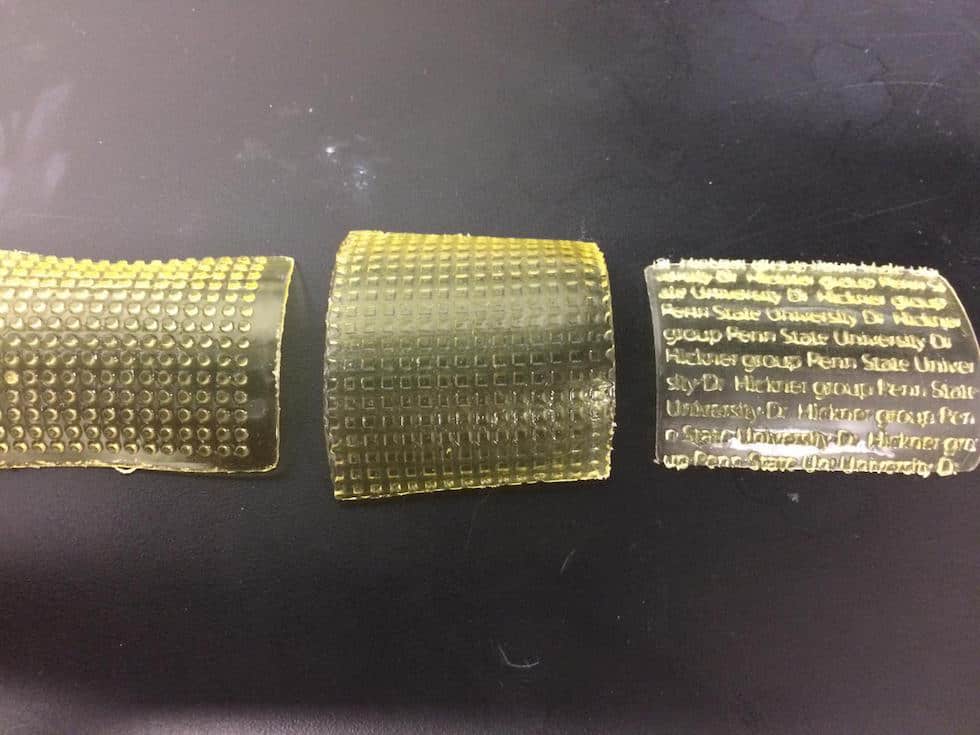
Ion exchange membranes have applications in fuel cells, as well as in water purification, desalination, removal of heavy metals and food processing.
Most of these membranes are thin, flat sheets but recent work has shown that by creating 3D patterns on top of the 2D membrane surface, certain hydrodynamic properties emerge that improve ion transport or mitigate fouling.
Making these so-called profiled patterned membranes involves etching a silicon mould with the desired pattern, pouring in the polymer and waiting for it to harden, a process that is time-consuming, expensive, and results in a single pattern type.
"We thought if we could use 3D printing to fabricate our custom-synthesised ion exchange membranes, we could make any sort of pattern and we could make it quickly," said Michael Hickner, associate professor of materials science and engineering, Penn State.
In a paper published in ACS Applied Materials and Interfaces, Hickner's team describes the development of a custom 3D photolithographic printing process similar to stereolithography.
The team developed a photocurable mixture of ionic polymers and exposed the mixture under a light projector to harden the base layer. They then added more polymer to the base layer and projected a pattern on the new material to selectively harden the surface. The surface pattern is said to increase the conductivity of the membrane by as much as a factor of two or three.
"Membranes act like a resistor in a battery or fuel cell," Hickner said in a statement. "If you can lower the resistance by a factor of two or three, you've really got something useful."
The paper's lead author, Jiho Seo, a Ph.D. candidate in materials science and engineering, said: "While surface-patterned membranes have been studied previously, this is the first 3D printed example of these structures and the first model that really explains the resistance decrease in a quantitative way.
“A simple parallel resistance model describes the effect of the pattern on lowering the resistance of these new membranes. This insight gives us a design tool to continue to innovate and create new patterns for further improvements along with changing the intrinsic chemistry of the material."
The team will continue to optimise the geometry and chemistry of the membranes they print, as well as learn to print new materials, both for membranes and beyond, that have so far not been printed.
"We want to bridge the fundamental chemistry and materials science that we do with the engineering and rapid design iterations that the 3D printing industry is really good at," Hickner said.




Glasgow trial explores AR cues for autonomous road safety
They've ploughed into a few vulnerable road users in the past. Making that less likely will make it spectacularly easy to stop the traffic for...